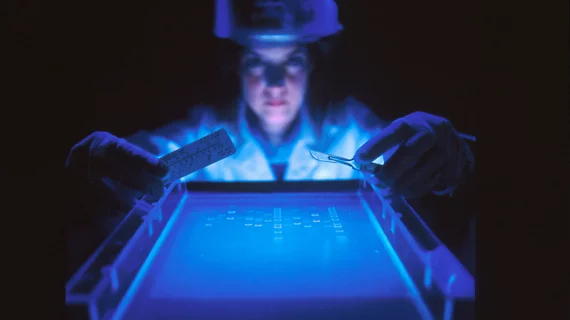Heart Association: 5 principles for dealing with genetic testing that may unduly trouble patients
When should a clinician tell a patient they have a gene variant that appeared incidentally but may have ramifications for cardiovascular health?
Only when the variant is known to be associated with cardiovascular disease (CVD) and the patient previously agreed to receive such information.
In fact, when these criteria are met, a medical professional should not only inform the patient but also make sure he or she gets checked for early symptoms and telltale family history.
What’s more, the clinical lead should possess expertise in inheritable CVD and serve as a member of a multidisciplinary care team.
These are among the primary recommendations newly offered by the American Heart Association for handling incidentally identified gene variants.
AHA posted the guidance March 27 in Circulation: Genomic and Precision Medicine [1].
The document’s authoring panel, chaired by pediatric cardiologist and cell biologist Andrew Landstrom, MD, PhD, of Duke University, suggest the guidance’s timing owes to the recent and rapid growth of genetic technologies. The underlying science continues to penetrate diagnostic and research realms, the authors point out, and today’s healthcare consumers increasingly happen upon intricate genetic insights via commercial DNA testing kits.
As a result, incidentally identified variants from widespread exome and genome sequencing represent “a significant and growing challenge to interpret and translate into clinical care,” Landstrom and colleagues point out.
Gene variants likely to surface include any number associated with such conditions as cardiac ion channelopathies, cardiomyopathies, thoracic aortic disease, dyslipidemias and congenital/structural heart disease.
The authors summarize the document’s key points as five guiding principles:
1. Only incidentally identified variants predicted to be associated with CVD—pathogenic or likely so—should be communicated to the patient who has agreed to learning about these results before gene testing was conducted.
2. The initial interpretation of a variant as CVD-associated is not always accurate and can change over time.
3. A framework should be established for interpretation of incidentally identified variants in CVD genes that includes (a) a patient-specific comprehensive evaluation for the CVD in question and (b) re-evaluation of the variant/gene association with the CVD in question to arrive at (c) a determination of variant risk of being associated with CVD development.
4. This framework of variant risk assessment determines appropriate clinical management and follow-up of the patient and their family.
5. The framework for interpreting incidentally identified variants in CVD genes should be conducted at a center that specializes in heritable CVD through a multidisciplinary team-based approach.
In coverage of the guidance by the Heart Association’s news division, Landstrom underscores the need for heart-care specialists to keep pace with advances in DNA and RNA sequencing.
“Where we would once look for genetic changes in a handful of genes, we can now sequence every gene and, potentially, the whole genome, allowing us to make genetic diagnoses that would have been impossible in the past,” Landstrom says. “If we interpret these incidental variants incorrectly, it may lead to inappropriate care, either by suggesting patients have a risk of cardiac disease when they do not or by not providing care to those with increased risk for a serious condition.”
The AHA scientific statement is available in full for free (click PDF/EPUB link).

